Ian W. McBrearty
Double Difference Earthquake Location with Graph Neural Networks
Oct 25, 2024
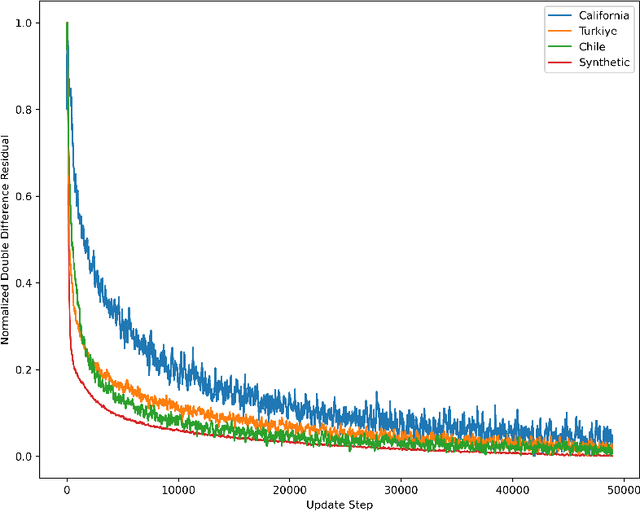
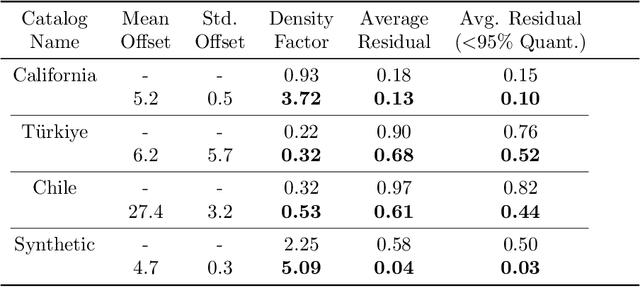
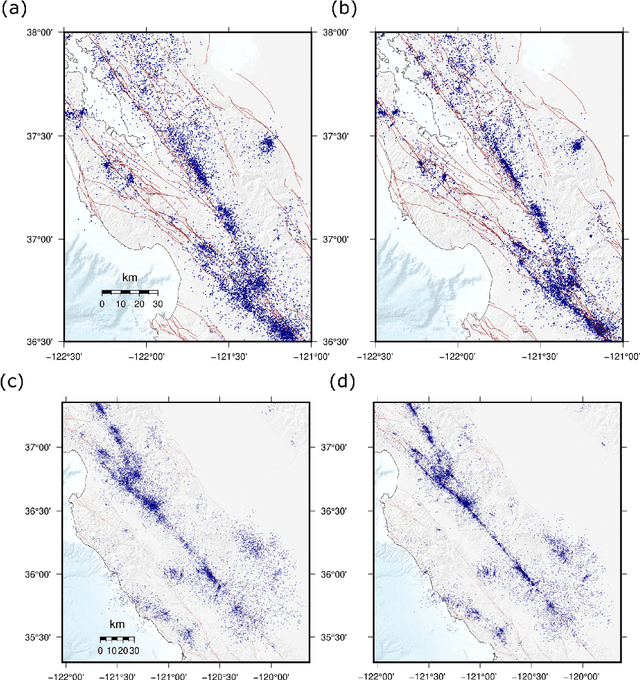
Abstract:Double difference earthquake relocation is an essential component of many earthquake catalog development workflows. This technique produces high-resolution relative relocations between events by minimizing differential measurements of the arrival times of waves from nearby sources, which highlights the resolution of faults and improves interpretation of seismic activity. The inverse problem is typically solved iteratively using conjugate-gradient minimization, however the cost scales significantly with the total number of sources and stations considered. Here we propose a Graph Neural Network (GNN) based earthquake double-difference relocation framework, Graph Double Difference (GraphDD), that is trained to minimize the double-difference residuals of a catalog to locate earthquakes. Through batching and sampling the method can scale to arbitrarily large catalogs. Our architecture uses one graph to represent the stations, a second graph to represent the sources, and creates the Cartesian product graph between the two graphs to capture the relationships between the stations and sources (e.g., the residuals and travel time partial derivatives). This key feature allows a natural architecture that can be used to minimize the double-difference residuals. We implement our model on several distinct test cases including seismicity from northern California, Turkiye, and northern Chile, which have highly variable data quality, and station and source distributions. We obtain high resolution relocations in these tests, and our model shows adaptability to variable types of loss functions and location objectives, including learning station corrections and mapping into the reference frame of a different catalog. Our results suggest that a GNN approach to double-difference relocation is a promising direction for scaling to very large catalogs and gaining new insights into the relocation problem.
Deep Learning Forecasts Caldera Collapse Events at Kīlauea Volcano
Apr 30, 2024Abstract:During the three month long eruption of K\=ilauea volcano, Hawaii in 2018, the pre-existing summit caldera collapsed in over 60 quasi-periodic failure events. The last 40 of these events, which generated Mw >5 very long period (VLP) earthquakes, had inter-event times between 0.8 - 2.2 days. These failure events offer a unique dataset for testing methods for predicting earthquake recurrence based on locally recorded GPS, tilt, and seismicity data. In this work, we train a deep learning graph neural network (GNN) to predict the time-to-failure of the caldera collapse events using only a fraction of the data recorded at the start of each cycle. We find that the GNN generalizes to unseen data and can predict the time-to-failure to within a few hours using only 0.5 days of data, substantially improving upon a null model based only on inter-event statistics. Predictions improve with increasing input data length, and are most accurate when using high-SNR tilt-meter data. Applying the trained GNN to synthetic data with different magma pressure decay times predicts failure at a nearly constant stress threshold, revealing that the GNN is sensing the underling physics of caldera collapse. These findings demonstrate the predictability of caldera collapse sequences under well monitored conditions, and highlight the potential of machine learning methods for forecasting real world catastrophic events with limited training data.
Earthquake Phase Association with Graph Neural Networks
Sep 15, 2022
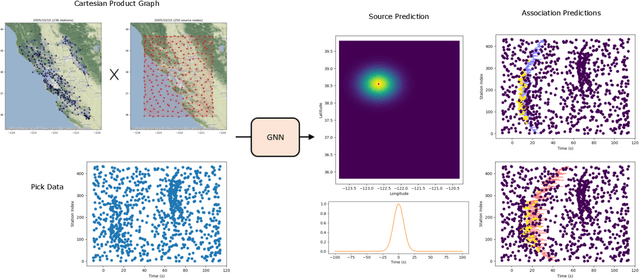

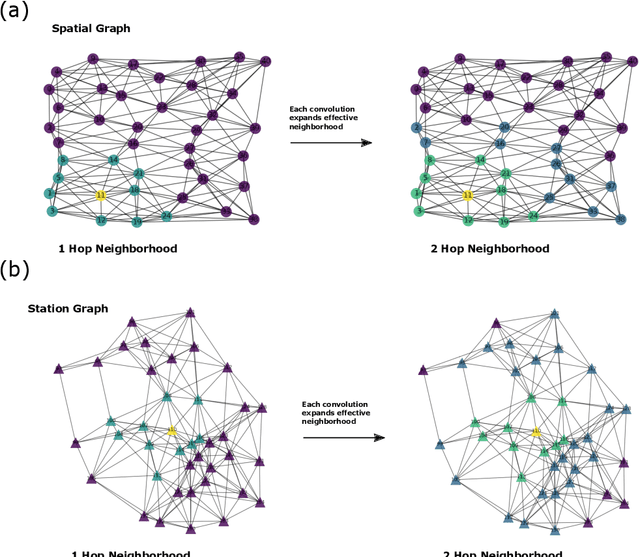
Abstract:Seismic phase association connects earthquake arrival time measurements to their causative sources. Effective association must determine the number of discrete events, their location and origin times, and it must differentiate real arrivals from measurement artifacts. The advent of deep learning pickers, which provide high rates of picks from closely overlapping small magnitude earthquakes, motivates revisiting the phase association problem and approaching it using the methods of deep learning. We have developed a Graph Neural Network associator that simultaneously predicts both source space-time localization, and discrete source-arrival association likelihoods. The method is applicable to arbitrary geometry, time-varying seismic networks of hundreds of stations, and is robust to high rates of sources and input picks with variable noise and quality. Our Graph Earthquake Neural Interpretation Engine (GENIE) uses one graph to represent the station set and another to represent the spatial source region. GENIE learns relationships from data in this combined representation that enable it to determine robust source and source-arrival associations. We train on synthetic data, and test our method on real data from the Northern California (NC) seismic network using input generated by the PhaseNet deep learning phase picker. We successfully re-detect ~96% of all events M>1 reported by the USGS during 500 random days between 2000$\unicode{x2013}$2022. Over a 100-day continuous interval of processing in 2017$\unicode{x2013}$2018, we detect ~4.2x the number of events reported by the USGS. Our new events have small magnitude estimates below the magnitude of completeness of the USGS catalog, and are located close to the active faults and quarries in the region. Our results demonstrate that GENIE can effectively solve the association problem under complex seismic monitoring conditions.
 Add to Chrome
Add to Chrome Add to Firefox
Add to Firefox Add to Edge
Add to Edge